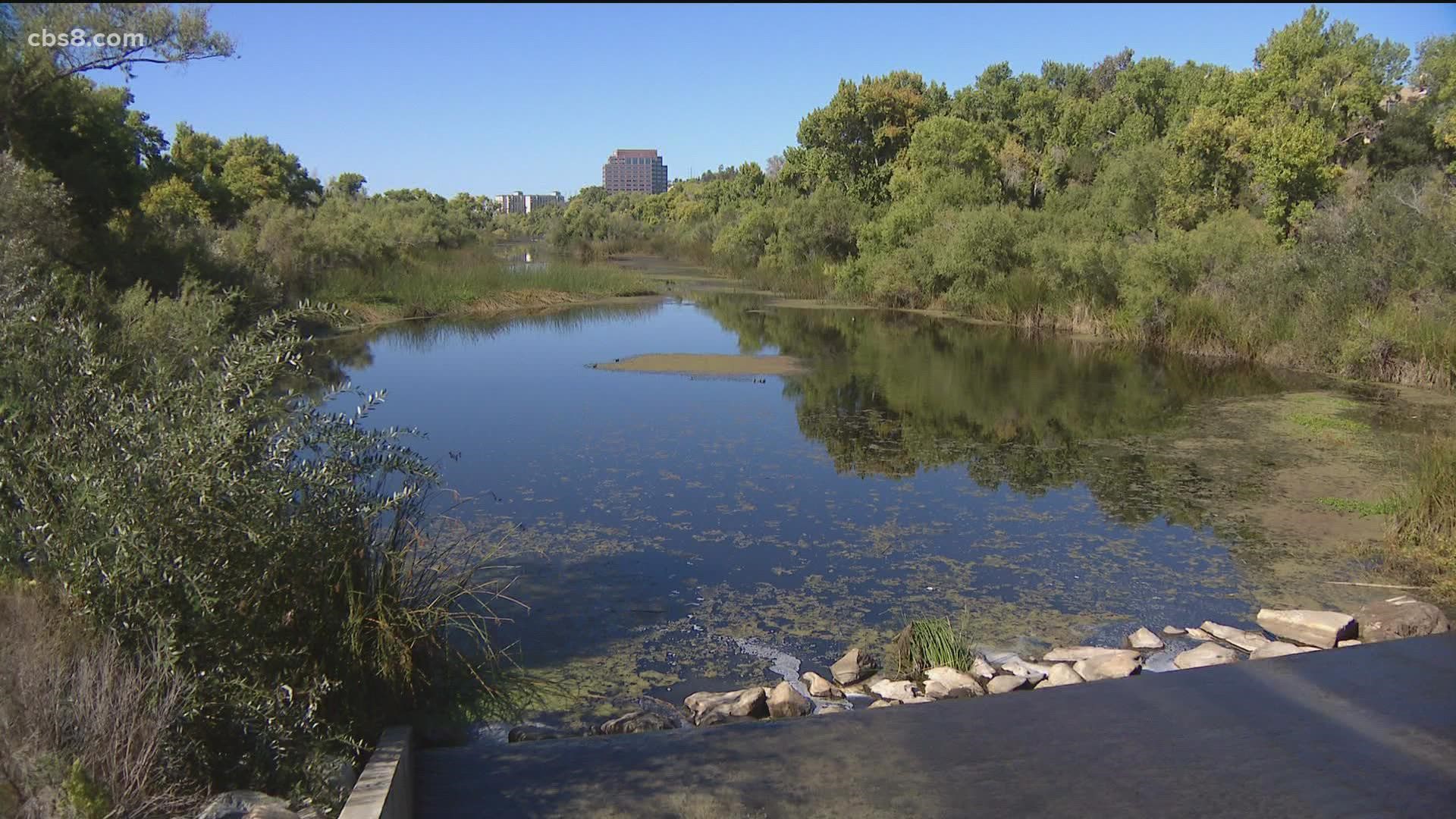SAN DIEGO — The rainy season is in full swing. When we talk about the rainy season, there's a checklist that the County of San Diego wants you to remember because stormwater pollution is a major problem here.
"While you're looking at your property and your home and your world, you should do everything we can to keep pollutants off of the streets, off of our curbs and gutters, out of our storm drains and out of our local waterways," said Stephanie Gaines, the Program Coordinator for the County of San Diego.
Stephanie and I met up for a stroll near the San Diego River in Mission Valley, ironically to talk about the rainy season, with the sun shining down on us. Stephanie wants all San Diegans thinking about how we can protect our County's ecosystem. Stormwater pollution is a consistent threat to our local environment, water quality and even our own health.
"We rec-create in these waters. Anything that flows from the head waters through like the San Diego River, down to the ocean, ends up in the ocean. And when people surf and they swim, they can be impacted by those pollutants. So can the fish that we consume or the shellfish that we consume," said Gaines.
We know it can rain anytime of the year in San Diego, but the bulk of our moisture typically comes down from October 1st through April 30th. The runoff from our homes transforms into untreated pollution and gets carried away in storm drains, only to ends up in our local creeks, rivers and the Pacific Ocean.
Stephanie says there isn't one particular hot spot in San Diego most negatively impacted. Stormwater pollution impacts each of our 11 watersheds. The only difference is the various types of pollutants.
"Some of them are impacted for things like bacteria, some with nutrients, others with sedimentation or trash," said Gaines.
When referring to nutrients, Stephanie means an increased level of fertilizers presents in our waters. Sedimentation alludes to any pollutants that clogs up our waterways, which also has negative impacts on wildlife.
Stephanie continued to say that trash is the most common culprit. As San Diegans, what can we do to combat this problem?
A few rainy season checklist items include picking up pet waste, making sure your trash, yard trimmings and recyclables are put in a bin with a closed lid and don't use chemicals like fertilizers, herbicides, and pesticides on your property before a big rain event.
"If those pollutants aren't there in the beginning, there's no harm no foul. You don't have to worry about getting those things in the environment and it can make a big difference in the water quality that we see out in our environment," expressed Gaines.
She also encourages us to revisit the rainy season checklist monthly. For more checklist items and local rebates for services and supplies like landscape retro fits, turf removal and rain barrels, check out projectcleanwater.org for more details. For additional references, visit: The City of San Diego: Report Stormwater Pollution and San Diego Coastkeeper Urban Runoff.
RELATED: High school students plant new life in Balboa Park to commemorate birthday of Kate Sessions
WATCH RELATED: Interactive maps show projected sea-level rise across world (Nov 15, 2021)

